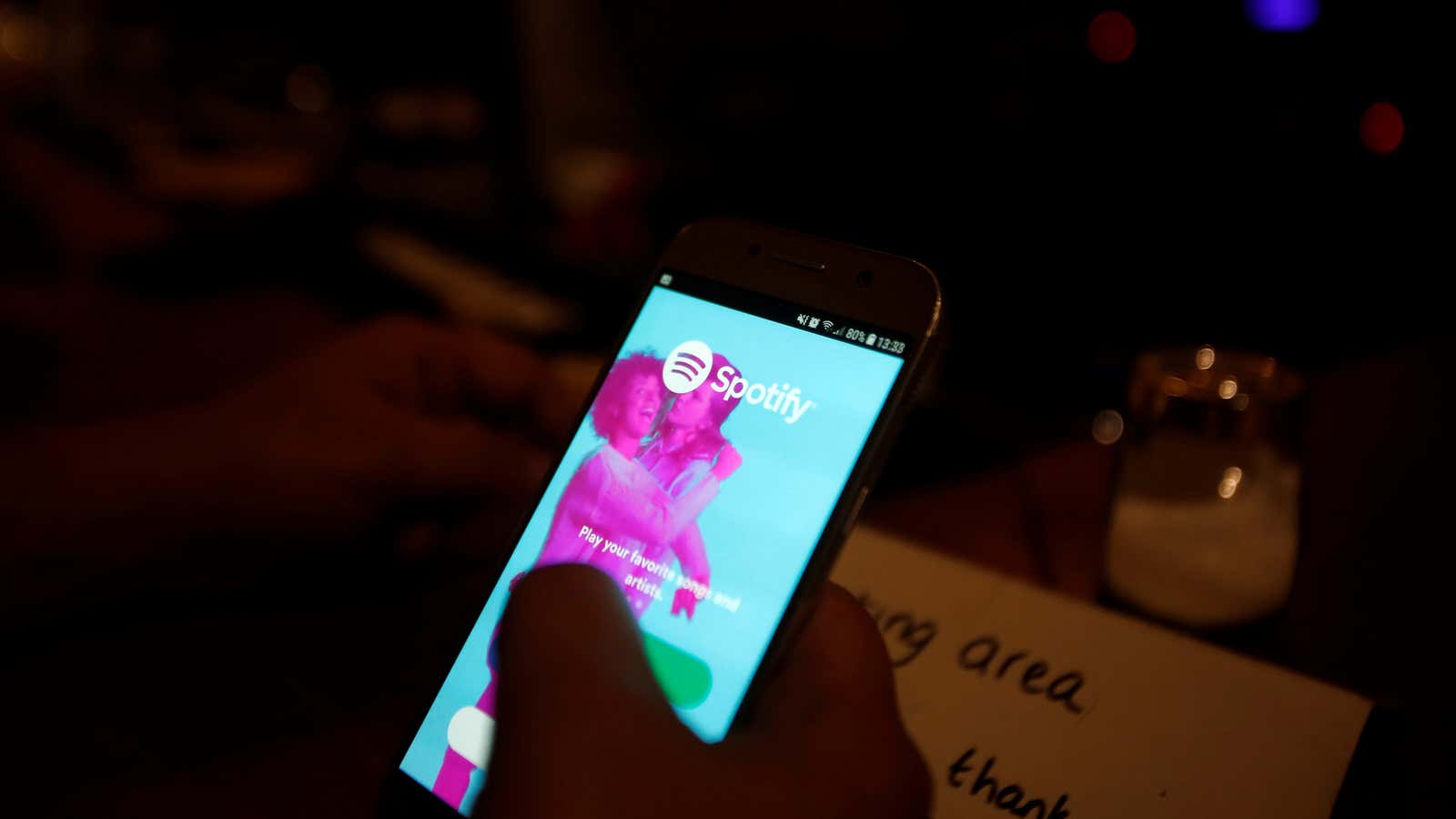Conquering the worlds of video and podcasts is important to Spotify, but its core business is still music and the fans who love it. To that end, the company has rolled out a feature that displays lyrics to all users and on most platforms including smartphones, tablets, desktops, and smart TVs that support the Spotify app.
The Lyrics feature allows listeners to see real-time song lyrics displayed as the tune plays and opens the path for Spotify to become the go-to solution for karaoke fans, and possibly businesses, around the world.
This may be the first step toward Spotify taking over the karaoke space
First tested among a small group of users in 2019, Lyrics was later rolled out in southeast Asia, India and Latin America before becoming widely available yesterday (Nov. 18). Beyond Spotify’s large mobile footprint, it could challenge traditional karaoke environments, which generally require a large screen to display song lyrics, via its distribution of Lyrics through Android TV platforms and gaming consoles. Clubs and bars could conceivably run Lyrics on a television rather than the traditional karaoke setups which can cost anywhere from $500 to $5,000.
🎧 For more intel on the music industry, listen to the Quartz Obsession podcast episode on Afrobeats. Or subscribe via: Apple Podcasts | Spotify | Google | Stitcher.
The one major caveat is that Spotify’s new feature does not allow you to turn off the vocals to songs, which means that fans would have to sing over the singer’s performance. However, last fall, a possible new feature that allows users to turn down the volume on vocals was outlined by a prominent code analyst who frequently previews popular app features before they’re released to the public.
Directing the future of karaoke you can perform anywhere
The popularity of karaoke has spread globally since its introduction in the 1970s, but the activity has since moved beyond tiny cafes and bars and is now available via all-in-one home devices as well as apps like Smule, which allows users to record solo or group performances. In fact, the decline of karaoke machine sales aligns with the rise of smartphones and tablets in the late 2000s.
Smule was particularly useful to some music fans during pandemic lockdowns, giving friends and family another way to meet and socialize virtually. The combination of the covid-19 lockdowns and the rise of apps like Smule and now Spotify’s updated feature may force in-person karaoke business owners to rethink their approach.
